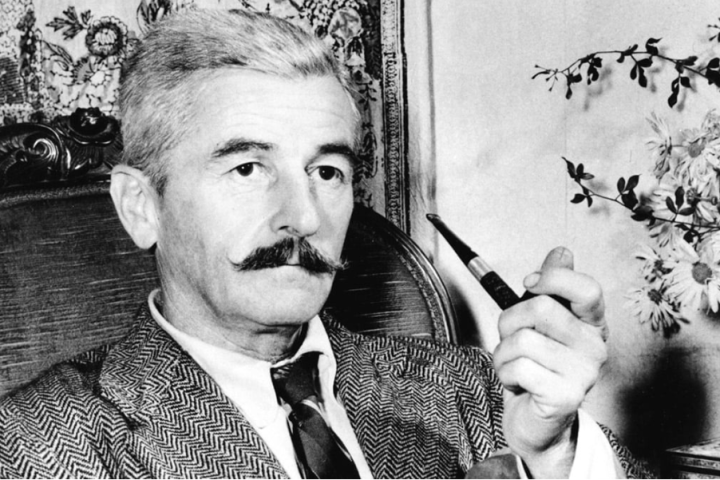In 1983, at the age of 81, Barbara McClintock is considered one of the most distinguished scientists of the 20th century, becoming the first woman to win the Nobel Prize in Physiology or Medicine for her work on “mobile genetic elements” – genetic transposition, or the ability to change the position of genes on a chromosome.
- Cola Consumption is Associated with Oxidative Stress and Memory Issues, According to a Rat Study
- Germans take their money out of the vault
She was the third scientist to be elected to the National Academy of Sciences in 1944, a challenging time for women’s social acceptance, and the first to be elected president of the Genetics Society of America in 1945. In 1971, President Richard M. Nixon presented McClintock with the National Medal of Science. She was 79 when she became the first recipient of a lifetime MacArthur Foundation grant, informally known as the “genius” grant. In the same year, she was awarded the Albert-Mary Lasker Prize.
Barbara McClintock in Brief
Barbara was born in 1902 in Hartford, Connecticut. She was interested in sports since her childhood and was active in some sports such as volleyball, swimming and skating.

Barbara enrolled at Cornell University’s College of Agriculture in 1918. As an undergraduate, she was a popular student and benefited from the social and intellectual environment of her school. She decides to continue her graduate studies in cytology. Although female students were not allowed to enter the genetics department at Cornell, she joined a small group studying maize cytogenetics – the genetic study of maize at the cellular level. Over time, she became a highly influential member of this group. From the second year of her studies, she works as an assistant.

Barbara McClintock’s Work
He describes a new method of maize genetics and explains the structure of maize chromosomes. In 1927, when he finished his PhD, he remained at the same university as an instructor to map maize chromosomes. US geneticist George Wells, a close friend since his graduate studies, helped Beadle to unravel the chromosome structure of the fungal genus Neurospora. With this work, Beadle developed the “one gene, one enzyme” theory. In 1929, McClintock met US botanist Harriet Creighton, a graduate student, with whom he worked to show how chromosome transitions occur in maize chromosomes.
In early 1930, he won fellowships from the National Research Council and the Guggenheim Foundation. He then traveled to Germany to carry out some of his work. However, he was forced to return home early due to rising political tensions. “I could not have chosen a worse time. The general morale of the scientists was encouraging, but there were almost no students from other countries. The political situation and its devastating consequences were very evident.”

In 1931, he began to spend his time shuttling between the University of Missouri and Cornell University. In 1936, he was offered by the University of Missouri to become an educator on the faculty. As a result, she became an assistant professor. She was advised that her work did not fit the idea of a “ladylike” scientist. She sees that she will never be promoted because of her allegedly independent and “maverick” methods. Subsequently, she left the university in 1941 after five years of work.
He said of this unfair process, “I have not yet been offered a job. Even though I’m getting a good salary now, I can’t say that I’m very excited about still being on the unemployment list. The uncertainty bothers me a bit and demoralizes me. It prevents me from continuing my work without the necessary stimulus.”
Pre-Nobel Prize Research
US geneticists Marcus Morton Rhoades (1903-1991) and Milislav Demerec (Croatian geneticist, 1895-1966), a geneticist at the University of Colombia who was researching the small fly Drosophila, respected McClintock’s research and invited McClintock to spend the summer at their Cold Spring Harbor Laboratory.
When Demerec became Director of the Department of Genetics at the Carnegie Institution of Washington at Cold Spring Harbor, he asked McClintock to work with him. At first hesitant, McClintock finally accepted the offer in 1942. It was at Cold Spring Harbor that he carried out the transposition of maize chromosomes that brought him the Nobel Prize in Medicine.

In 1957, McClintock received funding from the National Science Foundation and the Rockefeller Foundation to study different maize species or races in South and Central America. He therefore traveled extensively in the early 1960s. He collected maize samples that exhibited interesting evolutionary traits. He mentors scientists and graduate students in the field of maize genetics.
McClintock and his colleagues spent two decades piecing together data on differences in South American maize. Finally, in 1981, they published “The Chromosomal Constitution of Races of Maize”.

After a 26-year career, he retired from the Carnegie Institution in 1967. He was awarded the Distinguished Service Award. He continued to work as a research investigator at Cold Spring Harbor until his death in 1992. McClintock, who loved to play tennis and pick walnuts for his colleagues on Cold Spring Harbor’s vast grounds, died on September 2, 1992 at the age of 90. McClintock is remembered by those who knew him for his wit, sense of humor and passion for science.
Her journey to become the first woman scientist to win the Nobel Prize in Medicine on her own
McClintock went beyond Gregor Mendel’s (Austrian botanist, 1822-1884) work on peas in the nineteenth century and, unlike Mendel, was able to analyze the relationship of plant chromosomes. The first experimental proof that genes are located on chromosomes came from the work of McClintock and Harriet Creighton in the early 1930s.

Namely, in most organisms, each of a pair of chromosomes matches the inheritance from each parent. It has long been suspected that during the process of cellular division called meiosis, fragments of chromosomes inherited from one parent could be replaced by similar fragments on a chromosome from the other parent. McClintock and Creighton were able to link a genetic trait to a fragment of a chromosome that could be observed under a microscope, thus demonstrating the physical basis of genetic transmission.
When geneticists used X-rays, they discovered that they caused mutations in genes in fruit flies, maize and other organisms. They could then map a gene to a specific site on a chromosome. In some cases, the X-rays physically broke the chromosome. McClintock found each of the broken ends and fused them in different ways, leading to a major discovery.
The Great Discovery
In the late 1930s, McClintock discovered plants whose chromosomes spontaneously broke without further exposure to radiation. He also observed that as the plants grew, they continued to break in a cycle of “breakage, fusion and bridge”, just like fused chromosomes that separate from each other in cell division.
McClintock’s 1938 description of the “break-fusion-bridge” cycle cemented his status as one of the greatest figures in maize cytogenetics. It gave him the impetus for deeper research into chromosomes.
In fact, starting in the late 1920s, McClintock studied how genes on chromosomes can “move” during the breeding of maize plants. Through his work, he discovered that genetic elements can move to a different position from time to time, demonstrating the existence of DNA fragments called “jumping genes” or “transposons” in genetics. After him, from the early 1970s, molecular biologists found transposons in bacteria and viruses, and later in yeast. Unfortunately, McClintock’s work was not recognized until the existence of transposons was proven in bacteria.
What are Transposons? Why are they important?
Transposons are often called junk DNA and are DNA fragments in genomes that cannot directly encode protein. According to some studies, about half of the human genome and 90% of the maize genome is made up of these fragments. Most transposons are not mobile, but the mobile ones can cause harmful mutations when passed from generation to generation.
Links have been made between transposition and cancer, immunology and genetic engineering, as it plays a role in the transfer of genes that confer resistance to antibiotics between bacteria, certain types of viral infections and other fundamental biological processes.

In addition to his work on chromosomes and transposable elements, McClintock showed from the 1940s onwards that specific genes were responsible for the color of leaves, the physical properties of maize kernels or the opening and closing of individual kernels. He developed theories involving the suppression of genetic information from one generation of maize plants to another. He proposed the idea that it is possible to inherit changes in gene activity not caused by changes in DNA, a concept now formally known as epigenetics, more than 40 years ago.
His scientific work is often cited as the second great discovery in genetics after Mendel’s. Despite being described by scientists as a radical and his achievements ignored, McClintock worked patiently for years on maize genetics. He is one of the scientists who will never be forgotten, both for his outstanding efforts to have his achievements recognized and for the fact that he faced all kinds of difficulties in the field of science, which continues to face similar problems today.
Let’s leave it to him. “I was so interested in what I was doing and it was such a great pleasure, such a deep pleasure, that I never thought of stopping. It’s a very fulfilling and interesting life.”




